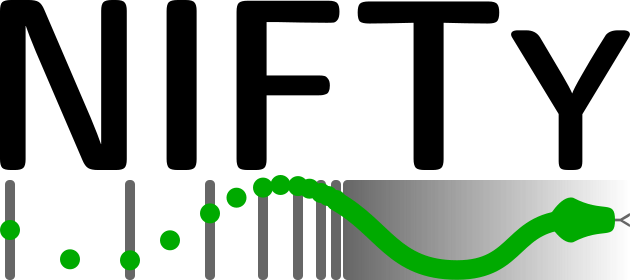Source code for nifty8.library.light_cone_operator
# This program is free software: you can redistribute it and/or modify
# it under the terms of the GNU General Public License as published by
# the Free Software Foundation, either version 3 of the License, or
# (at your option) any later version.
#
# This program is distributed in the hope that it will be useful,
# but WITHOUT ANY WARRANTY; without even the implied warranty of
# MERCHANTABILITY or FITNESS FOR A PARTICULAR PURPOSE. See the
# GNU General Public License for more details.
#
# You should have received a copy of the GNU General Public License
# along with this program. If not, see <http://www.gnu.org/licenses/>.
#
# Copyright(C) 2013-2019 Max-Planck-Society
#
# NIFTy is being developed at the Max-Planck-Institut fuer Astrophysik.
import numpy as np
from ..domain_tuple import DomainTuple
from ..field import Field
from ..operators.linear_operator import LinearOperator
from ..operators.operator import Operator
def _field_from_function(domain, func, absolute=False):
domain = DomainTuple.make(domain)
k_array = _make_coords(domain, absolute=absolute)
return Field(domain, func(k_array))
def _make_coords(domain, absolute=False):
domain = DomainTuple.make(domain)
dim = len(domain.shape)
dist = domain[0].distances
shape = domain.shape
k_array = np.zeros((dim,) + shape)
for i in range(dim):
ks = np.minimum(shape[i] - np.arange(shape[i]), np.arange(
shape[i]))*dist[i]
if not absolute:
ks[int(shape[i]/2) + 1:] *= -1
fst_dims = (1,)*i
lst_dims = (1,)*(dim - i - 1)
k_array[i] += ks.reshape(fst_dims + (shape[i],) + lst_dims)
return k_array
class _LightConeDerivative(LinearOperator):
def __init__(self, domain, target, derivatives):
super(_LightConeDerivative, self).__init__()
self._domain = domain
self._target = target
self._derivatives = derivatives
self._capability = self.TIMES | self.ADJOINT_TIMES
def apply(self, x, mode):
self._check_input(x, mode)
x = x.val
res = np.zeros(self._tgt(mode).shape, dtype=self._derivatives.dtype)
for i in range(self.domain.shape[0]):
if mode == self.TIMES:
res += self._derivatives[i]*x[i]
else:
res[i] = np.sum(self._derivatives[i]*x.real)
return Field(self._tgt(mode), res)
def _cone_arrays(c, domain, sigx, want_gradient):
x = _make_coords(domain)
a = np.zeros(domain.shape, dtype=np.complex128)
if want_gradient:
derivs = np.zeros((c.size,) + domain.shape, dtype=np.complex128)
else:
derivs = None
a -= (x[0]/(sigx*domain[0].distances[0]))**2
for i in range(c.size):
res = (x[i + 1]/(sigx*domain[0].distances[i + 1]))**2
a += c[i]*res
if want_gradient:
derivs[i] = res
a = np.sqrt(a)
if want_gradient:
derivs *= -0.5
for i in range(c.size):
derivs[i][a == 0] = 0.
derivs[i][a != 0] /= a[a != 0]
a = a.real
if want_gradient:
derivs *= a
a = np.exp(-0.5*a**2)
if want_gradient:
derivs = a*derivs.real
return a, derivs
[docs]
class LightConeOperator(Operator):
'''Constructs a Light cone from a set of lightspeed parameters.
The resulting cone is defined as follows
.. math::
\\exp \\left(- \\frac{1}{2} \\Re \\left( \\Delta \\right)^2 \\right)
with
.. math::
\\Delta = \\sqrt{- \\left(t^2 - \\frac{x^\\dagger C^{-1} x}
{\\sigma_x^2} \\right)}
where t and x are the coordinates of the target space. Note that axis zero
of the space is interpreted as the time axis. C denotes the input
paramters of the operator and parametrizes the shape of the cone.
sigx is the width of the asymptotic Gaussian in x necessary for
discretization.
Parameters
----------
domain : Domain, tuple of Domain or DomainTuple
The domain of the input parameters of the light cone, the values of the
lightspeed tensor.
target : Domain, tuple of Domain or DomainTuple
Output space on which the lightcone should be defined. The zeroth axis
of this space is interpreted as the time axis.
sigx : float
Width of the Gaussian for the discretized representation of the cone.
'''
[docs]
def __init__(self, domain, target, sigx):
self._domain = DomainTuple.make(domain)
self._target = DomainTuple.make(target)
self._sigx = sigx
[docs]
def apply(self, x):
lin = x.jac is not None
a, derivs = _cone_arrays(x.val.val if lin else x.val, self.target, self._sigx, lin)
res = Field(self.target, a)
if not lin:
return res
jac = _LightConeDerivative(self._domain, self._target, derivs)
return x.new(res, jac)
